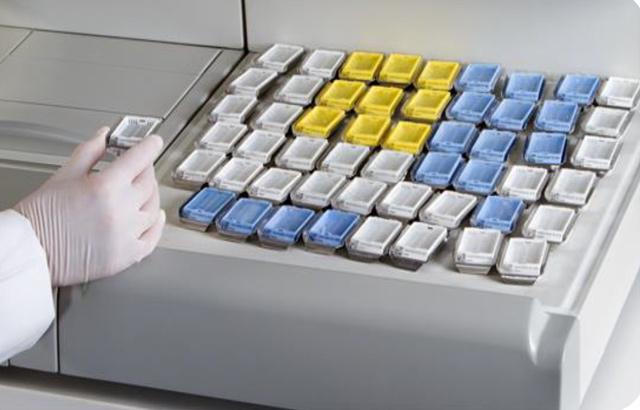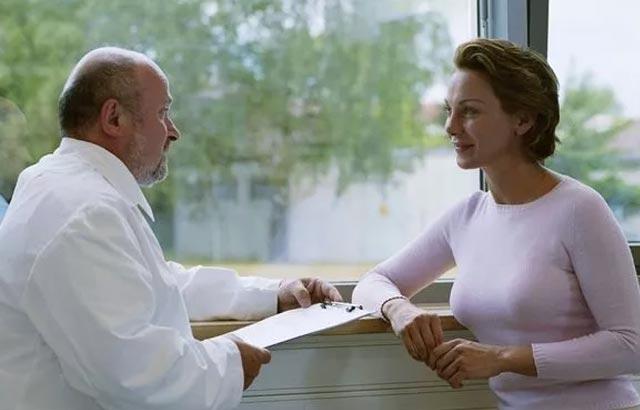
15 Questions & Answers on Safety in the Lab

Q: When we are working in a laboratory, especially histopathology laboratories, is there a risk that germs from tissues may be present in the environment or air, and what is the surety that these germs don’t stick to our clothes or hands or shoes?
A: Germs are present in the tissue, especially their fresh state. You want to make sure you are wearing a lab coat that’s going to keep them off your clothes. The biggest risk for transmitting those germs is during frozen sectioning because we’re sectioning fresh tissue. In my lab, the use of cryospray is completely banned. A cryospray aerosolizes all over the germs and since the lid to the cryostat needs to be open to do that you are aerosolizing everything into the air and putting yourself and your coworkers at risk for any pathogens.
Q: After tissue processing are these microorganisms gone or not?
A: They are gone. Tissue processing will kill all pathogens (except for prions) so after it is gone through the tissue processor its essentially not considered hazardous anymore.
Q: Is it necessary to have a separate lab disaster policy or can you incorporate the lab portion into a hospital policy?
A: Having a hospital policy is fine if the hospital policy designates the role of the laboratory in any disaster.
Q: Is there any long-term harm from constant exposure to chemicals such as formalin in a histopathology lab?
A: Yes. You want to refer to your Safety Data Sheets for each specific one you’re concerned about. We know formaldehyde is a carcinogen. We know that xylene can cause reproductive effects. Making sure that you’re wearing your proper Personal Protection Equipment (PPE) and monitoring your exposures you should be fine.
Q: What is the best way to begin an ergonomic plan?
A: If you’re in a hospital setting you can reach out either to your Occupational Health Department or to Human Resources and see if there’s a certified ergonomic assessment specialist in your organization. They generally will work in physical therapy or occupational therapy, and they can come and do an assessment for you. It’s pretty quick. It’s them seeing what you’re doing, watching how you work, and just looking at the environment. They can make suggestion about any changes that need to be made. If you’re going to write the policy, go on the NIOSH website; they have six steps to how to write a plan. It’s basically looking at your indicators, reviewing any past medical history, what you’ve done, what kind of engineering controls you’ve put in place, and then how you’ve changed around some plans.
Q: What are some ergonomic measures that one could take to avoid hand injuries in general?
A: In histology we’re working with a lot of small things; you’re working with forceps, you’re working with small tissue, so there’s a lot of that pinching and grasping movement especially when it comes to embedding. You’re doing a lot of hand work when you’re working with microtomy and making slides. We, obviously, cannot eliminate that job. So a good option is rotation of jobs so that it frees you up from excessive repetitions. In my lab, no one is doing the same job all day, every day; that’s the fix we’ve put in place to help reduce those types of injuries.
Q: Working on different equipment in laboratories sometimes there are parts in machines for service which we need to work on without gloves. Is it okay just washing the hands properly after working? I’m a service engineer with a local distributor. Would hand sanitation be enough or is some other method required to ensure that the germs don’t remain?
A: Proper handwashing is key to preventing any transmission of any sort of pathogens. Making sure you’re washing your hands with warm water and soap. Washing with the soap for, I think it’s 15 seconds or how long it takes you to recite the alphabet is what they teach my son in kindergarten. That should be enough.
Q: What are some ways of improving posture when completing tasks that may cause you to be slouched over for long periods of time, such as embedding and microtomy?
A: The first big thing is making sure that workstation is set up properly. If you are sitting to perform those tasks you want to make sure that your chair is at the right height for the counter. When you’re sitting you want to make sure that the backs of your thighs are along the seat of the chair, that you're sitting upright and that your elbows are bent at a 90-degree angle. That’s the first thing is making sure you’re using proper ergonomics in your workstation setup. The second thing you can do is workplace exercises that you can do in your chair or standing that can reverse. If you’re slouching, they’re going to be upper back bends and things to combat that awkward posture.
Q: If there is concern over the volume in a lab what type of ear protection is sufficient?
A: It depends on how loud the volume is and you can use a standard decibel counter to find out your reading. Up to 85 decibels, single-use foam pieces that you can buy at the drug store are fine. If you’re in a situation where something is very loud and you’re closer to the hundreds you’re going to want to use the earmuff-type headphones.
Q: What is the best way to deal with a fresh infectious sample to avoid contracting infections?
A: Get it into fixatives as quickly as possible. If it’s something that must be worked on fresh, we can wear masks or respirators to prevent any inhalation. Wearing an N95 mask will help prevent those droplets from getting into your respiratory system. Do not use the cryospray in the cryostats.
Q: How important is wearing hairnets when working in a pathology lab?
A: I don’t know that it’s important. I think that if your hair is pulled back that should be sufficient enough.
Q: Why would space heaters not be used in histology labs? My room barely gets to 70 degrees Celsius in Wisconsin.
A: That is a combustion issue, a fire hazard with all the chemicals around, so be sure to avoid space heaters around the chemicals.
Q: Do you see any issue with vapor monitoring more often than CAP recommends?
A: While it might be a pain to do, I think it is beneficial. Also, you demonstrate that you care about your employees by doing it. Things can change in your ventilation or something can happen with an instrument that you might not be readily aware of that can be picked up in vapor monitoring.
Q: Should histology labs be under negative pressure?
A: I am not aware that it is a requirement by OSHA or anybody. My department is under negative pressure, as well as the morgue, but it may be a local requirement. You should check with your Environmental Safety Department. They would probably know better.
Q: Regarding cryosectioning, do you disinfect the cryostat with UV light? How do you normally deal with that from a regulatory point of view?
A: The cryostat will have a UV light inside of it. It is not something that is added or purchased separately. It disinfects all visible surfaces. You also must do a decontamination to be in accordance with CAP.
About the presenter

Allison Eck is the lead histotechnologist at Doylestown Hospital in Pennsylvania. She has been a histotechnologist for 15 years after graduating with a degree in histotechnology from Harford Community College in Maryland and a bachelor’s degree in biology from Lycoming College in Pennsylvania. She holds her histotechnologist (HTL) and qualification in laboratory safety (QLS) certifications through the ASCP, as well as her Allied Health Instructor (AHI) certification through AMT. Allison has spoken at a variety of professional conferences on respiratory disease as well as lab safety and ergonomics.
Related Content
Leica Biosystems Knowledge Pathway content is subject to the Leica Biosystems website terms of use, available at: Legal Notice. The content, including webinars, training presentations and related materials is intended to provide general information regarding particular subjects of interest to health care professionals and is not intended to be, and should not be construed as, medical, regulatory or legal advice. The views and opinions expressed in any third-party content reflect the personal views and opinions of the speaker(s)/author(s) and do not necessarily represent or reflect the views or opinions of Leica Biosystems, its employees or agents. Any links contained in the content which provides access to third party resources or content is provided for convenience only.
For the use of any product, the applicable product documentation, including information guides, inserts and operation manuals should be consulted.
Copyright © 2025 Leica Biosystems division of Leica Microsystems, Inc. and its Leica Biosystems affiliates. All rights reserved. LEICA and the Leica Logo are registered trademarks of Leica Microsystems IR GmbH.



